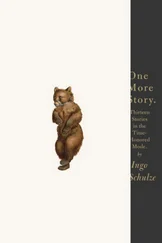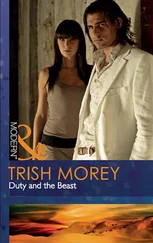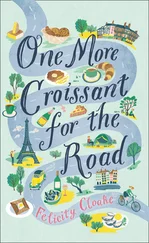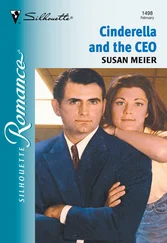Now for the artist’s habits. Up from his slumber at dawn, in summer and winter, Patterson’s first task was to shoot his supper. Through fields and coppices he roamed. Rabbits, hares, partridges, pheasants, pigeons fell to his fire. The game was carried back to the house. As far as was possible, Pear Tree Farm was self-sufficient. Its owner wished to be isolated from the wider market economy. Ground was cleared for vegetables, berries and fruits. Patterson’s wife dug his potatoes and tended his hop bines. Her husband drank her beer throughout the day, even when he was in bed.
Lighting was by candle, rush light and oil lamp. The children were disciplined within the house, though they could do as they wished in the fields and woods. Patterson had dogs and a horse. I do not know whether he kept a pig. Conceivably not. To own a pig was the sign of a cottager. Patterson was of no social class, but he was sure that he was not a peasant.
Patterson’s wife died in her early forties. Then his two daughters ran away from home. He married the woman who had been his wife’s nurse and she bore him two more children. Family traditions were always maintained. Every day, without fail, Patterson did his artistic work after lunch. The heart of Pear Tree Farm is an antique room with a huge inglenook fireplace. In Patterson’s day it was decorated with crossed muskets, pewter tankards and an ancient clock. In the middle of the room was an oval table. Patterson spent the afternoon at this convenient surface, where were placed his pens and ink, to the right, and his visual aids to the left. Nobody was allowed to see him draw.
Every week ten elaborate illustrations were made into a package. Patterson did not care if he never saw them again and never made a collection of his art. His wife took the drawings, on horseback, to Billingshurst, where there was a train service to London. Soon they would arrive at the offices of Cycling. And this routine was maintained for forty years.
The public-house inglenook that so often appears in Patterson drawings – where a cyclist sits on a curved oak settle by a log fire, enjoying his pint – in fact depicts Patterson’s favourite place in his own home. Pear Tree Farm was not merely his house; it was his local. He did not have to ride to a country pub, because his home was the perfect hostelry – the more so because travellers and strangers did not cross its threshold. Patterson never even met the writers of the touring articles he illustrated, though they were colleagues for years.
His two magazine editors, H. H. England and George Herbert Stancer, did make an annual visit to Pear Tree Farm. Every Christmas they brought Patterson presents and were allowed to sit in the inglenook. It was in their interests to keep their illustrator content. That was surprisingly easy: Patterson never complained about the wretched fees that the Temple Press, the publishers of Cycling , paid to the magazine’s most popular contributor. ‘G.H.S.’ (as he was always known) and the reactionary Harry England realised that their visits to Pear Tree Farm should be few and that Patterson’s secret had to be guarded. They ensured that the many thousands of people who loved his drawings never knew that Frank Patterson, who seemed to embody the spirit of cycling, was not a cyclist at all.
Even today, few cyclists are aware that Patterson was not really of our number. But he does belong to cycling, and to cycling alone. His art, which is unmistakable and resembles no one else’s, has no recognition at all beyond the world of British clubmen. The drawings are not reproduced in surveys of illustration, are not sent to auction and are never found in galleries. Most of Patterson’s output was destroyed by a fire in the Temple Press building in the Second World War. There may be some sheets somewhere and if there were opportunities to buy Patterson’s original work some people would pay large sums, for all cyclists beyond a certain age have a bit of Patterson in them.
The reason for his place in our hearts is uncanny, and without parallel. Patterson’s drawings give the impression that, wherever you ride, he has ridden there before you. We feel that his wheels had explored every lane in every English county. On hundreds or even thousands of occasions, we imagine, he had paused before some view and had climbed off his bike to take a sketch-book from its saddlebag. The truth is that Patterson scarcely went anywhere beyond the purlieus of Pear Tree Farm. His knowledge of places and scenery came from photographs and picture postcards.
Patterson’s life coincided not only with the era of popular cycle touring but also with the golden age of the picture postcard. He must have had an immense collection of them, no doubt supplied by Harry England or someone else at the Temple Press. Patterson made good use of his sources, so good that we don’t realise what those sources were. One can usually tell when a drawing has been copied from a photograph. Not so in Patterson’s art: his style is so distinctive that the photographic origin is erased. Patterson is also immemorial. Although we feel that he has visited the places he portrays, the drawings seem to record the spirit of some past time, not an actual moment.
Consciously or not, Patterson evoked the period after the First World War. The emptiness of his drawings, which make much use of white space, reflects a real emptiness in rural England. Fathers and sons from so many villages had left for foreign fields, never to return. Like so many parents of his generation, Patterson was interested in ghosts. Some drawings include spectres from another world, while many more have a generally ghostly quality. Here is another reason why they appeal to cyclists. We all have quasi-spiritual memories that come to us when we traverse roads we have known before, quietly gliding between hedgerows, changing rhythm with the lie of the land or the strength of the wind, rising a little from the saddle to catch a glimpse of a stream. Pedestrians do not know these experiences. Neither of course do motorists. Only cyclists know what I’m talking about and it’s useless to try to explain it to anyone else.
The mood that Patterson represents was also captured by a group of writers famous for their touring articles. Some were staffers on cycling magazines. Others had ‘day jobs’ and wrote in the evenings. The touring writers were also the lecturers who went round halls and clubrooms and institutes with heavy boxes of lantern slides. Often these lecturer-writers used pseudonyms. Here are some of their assumed names: ‘Kuklos’, ‘Chater’, ‘Wayfarer’, ‘Winona’, ‘Cotter Pin’, ‘Ragged Staff’, ‘The Gangrel’, ‘The Potterer’ and‘George a ’Green’.
‘Kuklos’, the most interesting of them, was a man called Fitzwater Wray. His writing was held to be authoritative until about 1950, partly because of his great age. (One of his stories recounted a ride from Bradford to London in 1898, when the Great North Road still had grass in the middle of its rutted surfaces – or so he claimed.) ‘Kuklos’ was shrewd. He acted as an agent for sending ‘city dwellers’ on farmhouse holidays, so he has a place in the history of the tourist industry. He wrote a cycling column for the Daily News (some of his pieces were collected in A Vagabond’s Notebook , 1908) and he had enough French to recognise and translate Henri Barbusse’s Le Feu
Конец ознакомительного фрагмента.
Текст предоставлен ООО «ЛитРес».
Прочитайте эту книгу целиком, купив полную легальную версию на ЛитРес.
Читать дальше












